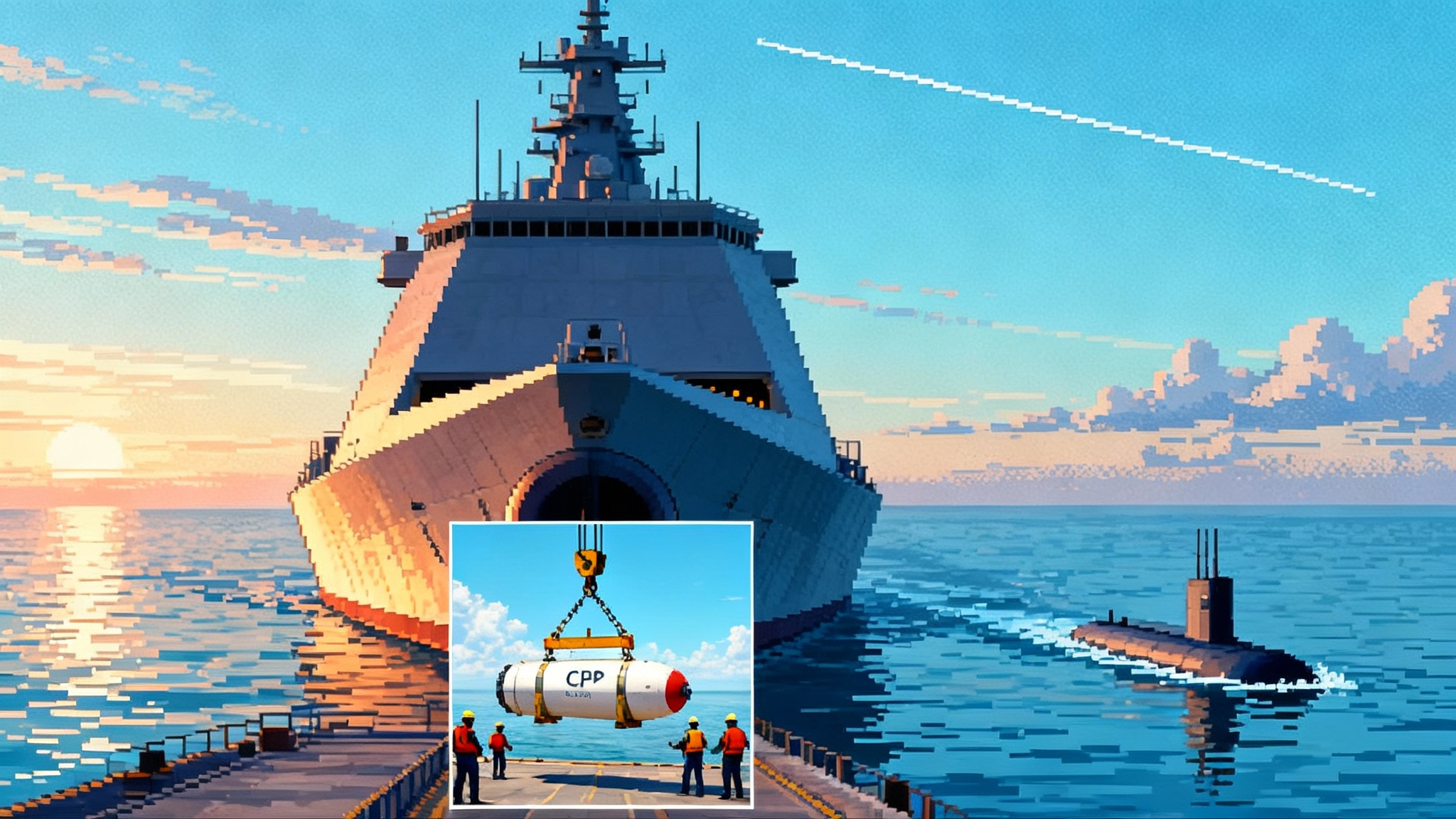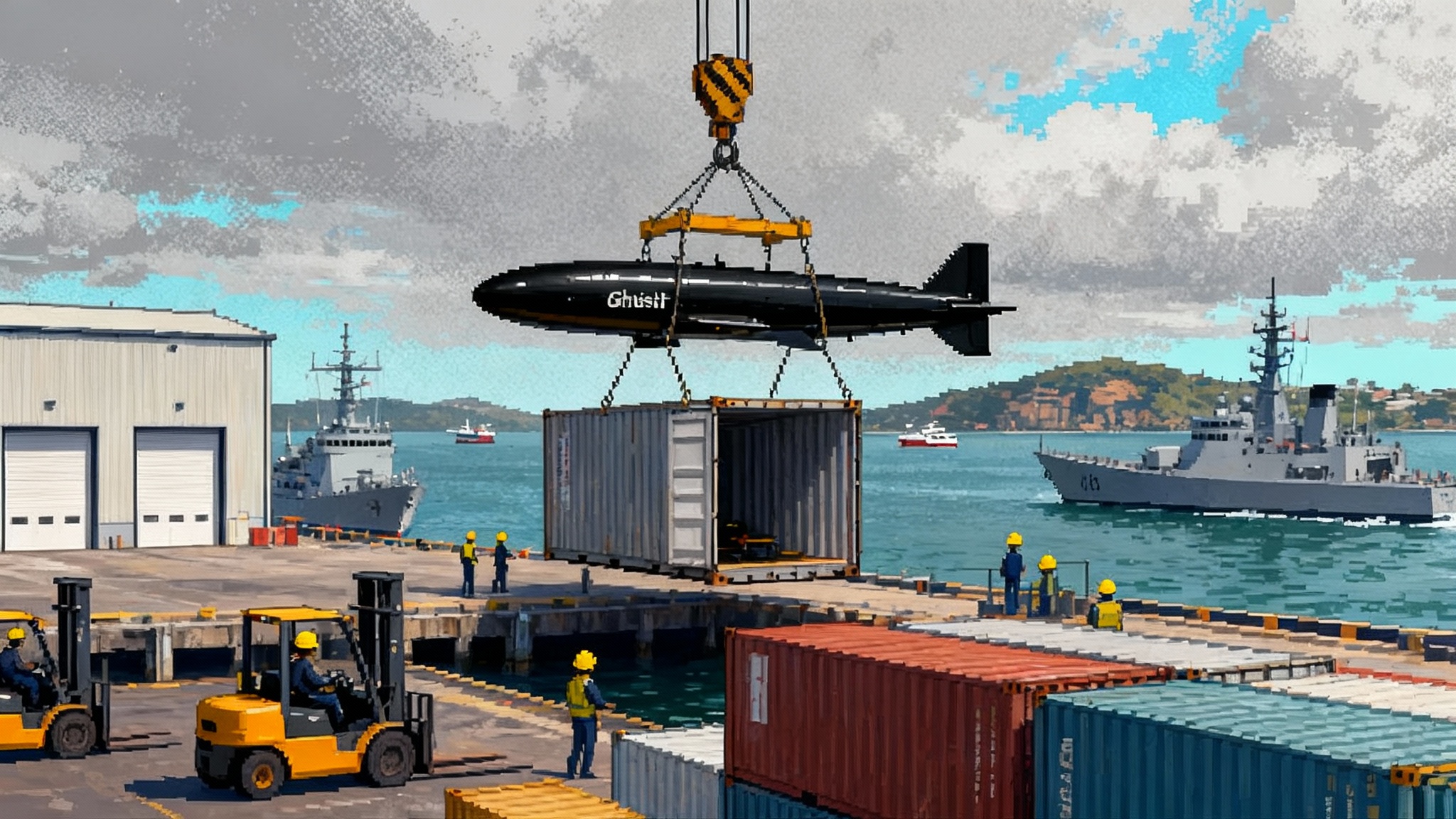Golden Dome Gets Real: America’s Space Shield Takes Shape
Five hard milestones in 2025 turned a moonshot into a program: a May 20 White House reveal, a July 17 Senate confirmation, a Sept 17 architecture brief, a June 24 LRDR test, and a Sept 3 record PAC-3 buy. Here is the plan to field by 2028-2029.

The year the clock started on a space shield
On May 20, 2025, the White House moved Golden Dome from talking point to program. The President unveiled a preferred concept for a space-enabled, multi-layer missile defense architecture, and put a Space Force four-star, Gen. Michael Guetlein, in charge of turning it into hardware and timelines. That Oval Office moment matters because it set money, milestones, and accountability, and it put space-based sensing and interceptors on the official blueprint for the homeland. It is the first time the United States has openly committed to putting defensive weapons in orbit as part of an integrated shield for the continent. AP coverage of the pivot.
Less than two months later, on July 17, the Senate confirmed Guetlein to lead the program as a direct-report manager. That confirmation did more than elevate a name. It created a single point of integration across the Missile Defense Agency, Space Force, the Army’s air and missile defense enterprise, and U.S. Northern Command. With one person on the hook, tradeoffs that used to die in coordination meetings can now be made in days.
On September 17, the Pentagon received the first official architecture briefing, a milestone that locked in the stack Golden Dome will build first and the sequence it will come online. Among the notional elements briefed to leadership: a space layer for global custody, a ground radar network for precision discrimination, and layered interceptors ranging from high-altitude midcourse down to point defense. The program office set a mid-November date for an implementation plan that details satellite counts, ground nodes, and initial sites. Reuters reported the milestone and its four-layer contours in plain language, which is rare for a program this sensitive. See Reuters’ architecture brief report.
Two events bookended that September brief with proof that the foundation is real. On June 24, at Clear Space Force Station in Alaska, the Long Range Discrimination Radar tracked a live ballistic target and fed clean track data into Command and Control, Battle Management and Communications, the joint battle manager. On September 3, the U.S. Army placed a record order for 1,970 Patriot PAC-3 Missile Segment Enhancement interceptors, a multiyear buy worth $9.8 billion, which signals industrial capacity will be there to stock the near-term layers.
These five dates did not solve missile defense. They did something more concrete. They created a credible path to an initial Golden Dome by 2028 to 2029, with space as a sensor backbone from day one and selective space-based intercept demonstrations as soon as the tech, power, and policy stars align.
The stack: how the shield really works
Think of Golden Dome like a smartphone stack. The phone body is the constellation and ground network. The operating system is the battle manager that fuses data and tasks weapons. The apps are the interceptors and radars you can add, update, or swap as threats evolve. You do not need every app at launch to be useful. You need a phone that boots fast, sees the world clearly, and can run what matters most with low lag and high reliability.
Space layer: custody from ignition to impact
- What it does: The low Earth orbit and medium Earth orbit layers maintain global custody of launches and midcourse flight, including dim or maneuvering threats. Legacy geostationary sensors see the bright early plume. Newer constellations, including Hypersonic and Ballistic Tracking Space Sensor prototypes and the Space Development Agency’s tracking satellites, add the narrower field-of-view data needed for fire-control quality tracks.
- Why it matters: The sooner you see a missile, the more options you have. For homeland defense, space custody provides the time-distance buffer to cue ground radars and decide whether to engage with midcourse interceptors or hold fire for a terminal shot.
- What is new in 2025: A pivot from demonstration to production planning. Sensor providers are signaling readiness for full-rate production, and the battle manager plan includes ingesting space tracks natively, not as a bolt-on feed. That shift builds on a year when responsive space goes operational.
- Space-based interceptors: The architecture assumes selective orbital intercept demonstrations before 2029, not a full space magazine on day one. The initial focus is boost or early ascent for slow, hot, easy-to-see targets in specific corridors, then glide-phase options for hypersonic threats. Offensively, the Navy CPS test starts the clock on similar timelines, raising the bar for defense. The technical hurdles are real: onboard power, thermal management, autonomous guidance with human-on-the-loop, shot doctrine that accounts for debris and collateral risk, and a cost-per-shot that beats a savvy adversary’s salvo math.
Ground eyes: discrimination at long range
- Long Range Discrimination Radar, Clear, Alaska: Proved in June 2025 that it can acquire and discriminate an intercontinental-class target and feed clean tracks to the battle manager. This is the precision stage that allows midcourse interceptors to aim at the warhead and ignore decoys.
- Lower Tier Air and Missile Defense Sensor, Army: Transitioned to production and demonstrated 360-degree engagement. LTAMDS replaces Patriot’s older radar and is the backbone of the terminal layer for complex raids, including low-flying cruise missiles and drones that can mask behind terrain.
- Other sensors: Upgraded Early Warning Radars, sea-based SPY-7 and SPY-6 families, and coalition sensors that can plug in through the battle manager backbone.
Interceptors: arrows for different altitudes and problems
- Midcourse: The Next Generation Interceptor replaces aging Ground-Based Interceptors with a multi-kill vehicle package and higher reliability. Early operational capability in the 2027 to 2028 window is the planning assumption that underwrites a 2028 Golden Dome Block 0.
- Terminal: PAC-3 MSE buys at scale fill magazines for dozens of batteries at home and with allies. The September 3 award was the strongest signal yet that industry is aligning labor, solid rocket motors, and guidance seekers for sustained high-rate output.
- Future space shots: Do not plan the initial shield around them. Plan the test series so that promising designs can be folded into Block 1 or Block 2 if they prove affordable, reliable, and legal under policy.
The brain: a battle manager that reasons in real time
The shield’s most important component is software. Command and Control, Battle Management and Communications, now under a new multi-billion-dollar modernization, is evolving from a data router into a decision aid that fuses space, land, and sea sensors, assigns weapons, and learns from every track. The Army’s Integrated Battle Command System pushes the same logic down to the tactical layer so LTAMDS, Patriot, and other shooters can fight as one. For how this scales tactically, see IBCS’ 2025 breakout moment.
Two rules shape the design. First, hold a human on the loop, not out of it. Second, verify machine-learned models with ruthless test data before they touch fire-control. In practice, that means using digital twins of the shield to run daily synthetic raids, then comparing those results to live-fire events at places like White Sands and the Pacific test ranges, and only then pushing updates to the operational stack.
A plausible road to first fielding in 2028-2029
Golden Dome is not a single ribbon cutting. It is a rolling series of Block releases that add coverage and capability like software.
- Q4 2025: Freeze the Block 0 architecture and issue the implementation plan that sets the minimum viable constellation, ground nodes, and shooter-magazine targets. Start long-lead buys for sensors, solid rocket motors, and satellite buses.
- 2026: Fly a jointly run space-to-ground kill chain end-to-end in a test corridor, using live satellites, LRDR, and a surrogate ground interceptor. Harden the battle manager with cyber red-teaming. Award multiyear production for PAC-3 MSE and surge LTAMDS deliveries to priority sites.
- 2027: First Next Generation Interceptor flight tests and initial emplacement at Fort Greely, Alaska, if schedule risk on boosters holds. Expand space custody by adding tracking satellites with fire-control quality sensors. Stand up the 24/7 Golden Dome watch floor that fuses space and ground data for the homeland.
- 2028: Declare Block 0 initial operational capability for the homeland. That means global custody from space, precision discrimination from LRDR and other radars, midcourse engagement against limited salvos, and layered terminal defense around selected locations. Conduct the first on-orbit intercept demo only if power, guidance, and debris-mitigation criteria are met.
- 2029: Expand Block 0 to Block 1 with more space sensors, more ground nodes, and deeper magazines. Fold in allied sensors and shooters from Canada and select NATO partners where policy and interoperability are mature.
The advantage of this cadence is that it relies on systems that are real, funded, and testing now, then layers in new tech as it proves itself.
The industrial ramp: from boutique to batch production
Industrial capacity will decide whether the 2028-2029 window is real. Three visible pivots happened in 2025 that change the calculus.
- Interceptors at scale: The September 3 award for 1,970 PAC-3 MSEs, the largest in program history, elevated the floor of production. The buy makes it economical to build workforce, tooling, and supplier depth for seekers, control actuators, and motors. It also signals to allies that supply will keep pace with orders.
- Radars with 360-degree coverage: LTAMDS moved from prototype to production, and the Army publicized successful flight tests where PAC-3 MSE executed an intercept using data from LTAMDS’ secondary sector. That is what the terminal layer looks like when it can fight in any direction.
- Space sensors prepared for volume: HBTSS and the Space Development Agency’s tracking layer transitioned from launch-and-learn to steady on-orbit test data. Providers are telling the government they can shift to full-rate production if the architecture locks quantities and interfaces.
The less visible but equally important piece is the software supply chain. Command and control upgrades awarded in 2024 and expanded in 2025 pull traditional primes, data platform companies, and dual-use software firms into the same integration lab. The task for 2026 is to translate that collaboration into an accredited pipeline that can deliver tested updates to the operational network every few weeks, not every few quarters.
Bottlenecks remain. Solid rocket motors for both terminal and midcourse interceptors need redundant sources. Radiation-hardened compute for space sensors must deliver higher throughput at lower power. The satellite bus market needs a common electrical and data interface standard for plug-in payloads across vendors so the government can compete providers without requalifying everything.
Allies: plug-in paths by design, not as an afterthought
Golden Dome will defend the homeland first, but it only gets better when allied sensors and shooters contribute.
- Canada and NORAD: Space custody and long-range discrimination are continental missions. As NORAD modernizes, Canada can plug new polar radars and data links into the battle manager for shared custody and shared decision-making. That improves warning time for both countries.
- Poland and Europe: LTAMDS is moving into production with Poland as the first international customer. That creates a clean, near-term path for European radars to feed the U.S. battle manager with 360-degree tracks. It also increases global volume for parts that the U.S. needs.
- Japan and the Pacific: Japan’s SPY-7 radars and Aegis System Equipped Vessels expand the oceanic sensor web, especially for tracking air-breathing and hypersonic threats. Those tracks can flow into U.S. custody and give Pacific Command more options during a crisis.
The battle manager modernization includes the first serious push to make allied data a default input rather than a separate coalition overlay. The policy work is as important as the software. Data-sharing agreements must spell out what track quality is required to task U.S. weapons and how to protect classified algorithms while still accepting foreign sensor feeds.
What must break loose for Golden Dome to shift from audacious promise to deployed deterrent
Three hard problems need near-term decisions.
- Acquisition speed without sloppiness
- What to do: Lock in a portfolio contract that mirrors how cloud providers buy capacity. Use a large indefinite-delivery, indefinite-quantity vehicle for sensors, buses, and battle management, then award task orders based on demonstrated performance, not paper proposals. Make cost-per-kill and time-to-field the two numbers that decide awards.
- Why: The shield is a system of systems with moving parts. If each part waits for its own annual program, the critical path keeps slipping.
- How: Tie milestone payments to exercised capability at the integration lab and at live ranges. Break down big awards into tranches where new entrants can win work if they beat incumbents on tested performance.
- Power and thermal in space
- What to do: Fund a small set of high-power satellite buses with standardized thermal interfaces that can host either interceptors, directed energy payloads, or advanced sensors. Package solar and battery solutions that comfortably support peaks in the tens of kilowatts and scale to more.
- Why: Space-based intercept attempts and some sensing modes need power and heat rejection that are beyond most current small buses. Without common power and thermal, every payload is a one-off science project.
- How: Run competitive flight demos in 2027 where two different buses host the same payload class. Write into the 2028 buys that any winning payload must fly on the common bus without custom redesign.
- Cost curves that beat salvo economics
- What to do: Attack the three biggest cost drivers, not with slogans but with engineering.
- Guidance and seekers: Dual-source the most expensive components and shift to modular open designs that multiple vendors can build.
- Solid motors: Pre-fund propellant lines and case winding machines and require vendors to publish statistical process control data so the government can trade cost for quality and schedule in real time.
- Launch: Buy launch services as bulk delivery of kilograms to specific orbits with penalties for late delivery, reward for manifest flexibility, and bonus payments for reuse that lowers per-kilogram price.
- Why: An adversary will try to saturate the shield with many cheap shots. The shield must drive down cost per shot while raising the cost for the attacker.
- How: Treat cost-per-kill as a measured metric. For every live or simulated raid, publish the average cost per successful intercept to the program office and to Congress.
Risks to manage, not to wish away
- Boost-phase optimism: Early ascent shots are attractive but unforgiving. The timeline from ignition to burnout is counted in minutes. Plan demonstrations in corridors where custody, geometry, and power are favorable. Do not anchor Block 0 on them.
- Autonomy trust: Battle management will increasingly recommend engagements. Keep humans on the loop for any lethal decision, and require model verification using real-world data before updates can change fire-control logic.
- Debris and policy: Any space intercept introduces debris risk. Set strict engagement criteria, and build a debris model into the shot doctrine so operators can compute second-order effects before greenlighting an intercept.
The bottom line
Golden Dome is not science fiction anymore. In 2025, the country picked an architecture, named a single accountable leader, proved key radars and software in live events, and ordered interceptors at historic volume. With a space layer that sees first and far, ground radars that discriminate cleanly, a battle manager that fuses and reasons, and interceptors that are built in batches not boutique, a limited but real shield can stand up by 2028 to 2029.
The country now chooses whether those dates are marketing or history. If acquisition breaks from calendar budgeting to performance buying, if space power and thermal jump from slide decks to flight, and if cost per kill falls faster than adversaries can print salvos, then Golden Dome becomes what deterrence looks like in the late 2020s: visible, layered, and ready to fight on its worst day. That is not a promise. It is a plan, with a clock already running.








